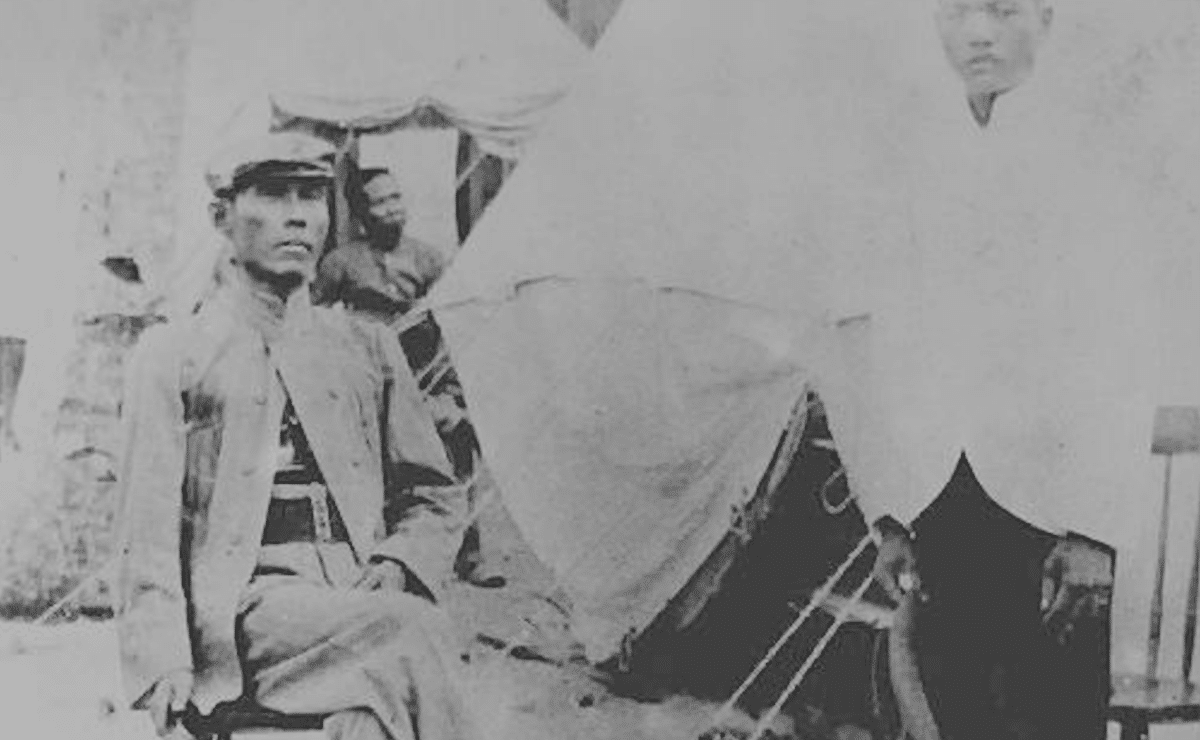Jan. 7, 1901: Gen. MacArthur lists revolutionaries to be deported to Guam

Apolinario Mabini in Guam. Photo from Wikipedia.
On March 6, 1521, the Portuguese explorer Ferdinand Magellan and his Spanish crew landed in Guam in the Marianna chain of islands in the Pacific Ocean. The crew was starving and suffering from malnutrition and tropical diseases. The crew bartered with the Chamorro people of the islands for provisions.
During Magellan’s time in Guam, some of the Chamorro inhabitants stole items from his sailing vessels. Magellan was so aggravated by this action that he labeled the Marianna Islands the Ladrone Islands or the Island of Thieves.
Shortly after landing in Guam, Magellan and his expedition proceeded 1,600 miles to the Philippine Islands. He and his crew were ignorant of the geography and cultures of Southeast Asia. He eventually landed at Mactan Island close to the large island of Cebu.
A conflict between the inhabitants of the islands and the Spanish fleet was inevitable. The Magellan expedition arrogantly thought that they could claim territory for the Spanish crown regardless of what the locals thought. Magellan was killed during a battle with the brave Lapu-Lapu and his forces.
Eventually, the Spanish colonialized Guam and the Mariana Islands just like they did the Philippine Islands. For 350 years of Spanish rule, Guam and the other Marianna Islands were an isolated outpost of the Spanish Empire.
During the Spanish-American War, the Americans captured Guam and the other Marianna Islands without a fight. The small and isolated Spanish contingent in Guam was unaware of global geopolitics between the United States and Spain.
On January 7, 1901, during the Philippine-American War, the American military leadership decided to use Guam very differently.
Guam became the punitive penal colony in the middle of the Pacific Ocean. If a prominent Philippine revolutionary leader, military or civilian, refused to take the oath of allegiance to the United States, they were placed on General Arthur MacArthur’s January 7, 1901, list of deportees to Guam. Most of the men on the list never had a trial.
The most prominent of the deportees was Apolinario Mabini, who was the intellectual force behind the Malolos Republic.
He had been captured by American troops in December 1899, but he refused to take the oath to the United States. His brother was also deported to Guam. Some of the wealthy deportees were able to bring their valets or servants with them.
On January 15, 1901, the dissidents boarded the Rosencrans, a US Army transport, and headed for Guam. The political prisoners arrived in Guam on January 24, 1901. They were held at the Presidio de Asan initially in tents and eventually in wood buildings. The US Navy and Marines ran the detention center.
By1903, the deportees had been sent back to the Philippines. In general, the Philippine-American War was over except for a few areas. Two of the deportees chose to remain in Guam.
Dennis Edward Flake is the author of three books on Philippine-American history. He is a Public Historian and a former park ranger in interpretation for the National Park Service at the Eisenhower National Historic Site in Gettysburg, PA. He can be contacted at: flakedennis@gmail.com

